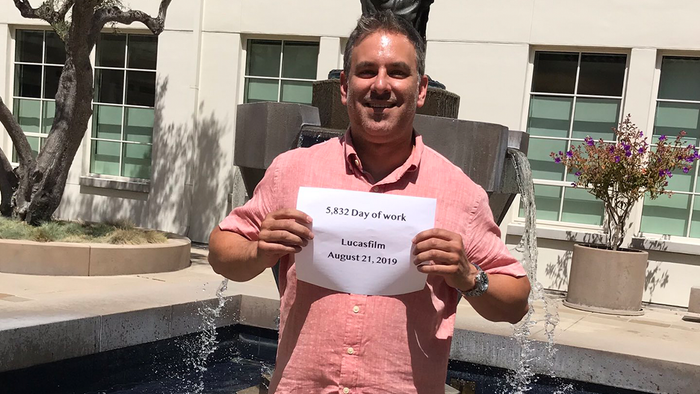
Featured Blog | This community-written post highlights the best of what the game industry has to offer. Read more like it on the Game Developer Blogs.
Design Journal - Part 4
An in-depth look at how our upcoming game was designed with longevity in mind.

-- Orignially published at http://blog.epic-owl.com/
Hey everyone! Today I'm back with a pretty detailed take on our upcoming game. When designing a game we have many targets we want to hit. While some of the basic stuff, like fun and engaging are there by default, I had an extra requirement that I take very seriously.
This is me designing a mobile game for Longevity.
We at Epic Owl always had a clear vision in mind. If we make a game, it needs to be one that you won't only play for its novelty and drop it after a few weeks, but one that you'll keep at for months and even years. Since we are talking about a mobile game and a team size of five, we can't go the Skyrim-way, and we can't commit ourselves to a crazy update cycle where we work for two months to bring the players 15 minutes of extra gameplay. All this boils down to a simple truth: we are going for a competitive multiplayer game. It's a difficult game to make, but if successful, the only one that can live up to ours and the players' expectations.
The thing about multiplayer is that it keeps the experience fresh. You can never really predict what your opponent is going to do, and you have to keep developing your own playstyle to keep up with others. The downside is that defining the difficulty of the game is not completely in our hands anymore and there's a big risk of inadvertently creating sheer progression walls. Additionally, we wanted to keep the game low tension, meta-heavy and rewarding for players of all skill levels. Let's look at how we approached these hurdles.
There are two distinct forms of multiplayer: synchronous (where all players control their actions real time) and asynchronous (where all players' presence is not required for gameplay). We opted for an asynchronous game for several reasons. A synchronous game would need a large player base online at all times (that we may or may not initially have) to avoid prolonged queues for finding opponents, and the server load and complexity would bloat. Our chosen method ensures you can always have multiplayer action, even if you're the only player online in the world.
Our game is also symmetrical. You build battle-capable spaceships and fight against ships designed by other players. In many competitive games you have two separate elements for this purpose, for example, a village and an army (one is your permanent base, the other is an expendable offensive tool). With our game they are the one and the same. Most players would find it frustrating if their ships were attacked and they had no control over the fight: therefore we had a good opportunity to take out two birds with one stone. The actual battles are AI controlled scenes. This makes the battle even and fair for both players and it lowers the general tension of the game as well. Low tension diminishes the threshold for firing up the game.
A long learning curve and a huge skill element are key factors in giving a game longevity. AI control of battles and the asynchronous nature both eat away from these. It was imperative to address this issue as well as we could, and that actually ended up being the biggest and toughest design task of the entire production. The solution was in bringing such a complex and deep strategy layer into building the ships that it would be impossible to ever design the perfect craft. Given this approach we still wanted to keep it so that however you build the ship, it's still going to be good. Let's elaborate a bit.
As a player, designing a decent balanced ship is relatively easy. You fill it with a variety of weapons and make sure you have enough defenses and power to operate. But certain types of weapons are effective only against certain defenses. When planning the ship's defense, you want to consider the entire spectrum of enemies you might come across. If you prepare for everything, you wont optimize against anything. And the ships come in a huge variety of shapes and sizes. Narrow, nimble ships are hard to hit and require little defenses up front, but their sides are always vulnerable. Then again huge, wide ships are more powerful, but get hit way easier, thus requiring far stronger emphasis on defense. The end result is that yes, you can build for balance, designing a ship that is decent against anything, but it won't defeat a horribly lopsided and imbalanced enemy. Then again, those skewed designs are hopeless against ships that were prepared for their single strength. In short, this philosophy ensures that there is no perfect approach, and finding anything even near optimal is nigh impossible but exciting.
If players always went up against the same enemies, they would learn to build specifically against those designs, removing the risk and challenge from battle. Therefore, whenever a player defeats an enemy, there is a chance his ship takes that enemy's place in the matchmaking tables. This means that when players find a good design and win a lot of battles, they populate the game world until all the old ships have vanished. At this point their current design becomes invalidated, and the moment someone comes up with a counter design for the present meta, they can effortlessly defeat everyone else. The same cycle repeats: the new ship design starts dominating the game until a counter design is invented. This causes the gameplay to inherently renew itself without input from us developers. On a personal note, I must say I'm pretty curious to see what kind of designs people come up with, and how diverse the metagame actually becomes.
Of course there's only a limited number of different ship models and modules in the game. Once a player reaches the top levels and they have access to all the elements in the game, we need to make sure there is still a lot of stuff to do. For one, the sheer amount of possible designs can keep the experimental player curious and, uh, experimenting for a really long time. But that's not enough. We recognize that when a player feels they have mastery over a game, they want to flaunt that. The real competition steps in, and the race to the leaderboards beings. This can be a never-ending grind for the ambitious as their peers are always developing better solutions for their ships, climbing the ranks with them and raising the challenge levels to however high up they can push each other. To eliminate the reality of the top end players running off into the unreachable, we decided to implement "soft resets" of the leaderboards. Low and mid range players keep their ranks, and the highest leveled players fall back enough for everyone else to have a theoretical chance of catching them up.
So, let's run through the points again one more time. This is how I designed our first game for Longevity.
1. Multiplayer experience. No other approach comes even close to the diversity and intrigue that multiplayer can yield in the long run.
2. Competition. Even after you've achieved everything there is to achieve, you will find yourself wanting to reach for those highest ranks. This yearning never ends.
3. Evolving metagame. There's a limited amount of new content we can create. The naturally evolving metagame keeps the experience always fresh.
4. Extreme diversity. The possible permutations of ship designs are so vast that the creative gameplay choices are technically infinite. You never run out of options.
5. Complex strategy. While easy to learn and control, the depth of the strategic choices and their implications are impossible to ever fully calculate. You'll keep learning forever.
6. Low tension. Even with all the competition and multiplayer stuff, we don't want to make casually engaging the game an issue. The game needs to be stress-free if the player so wants it.
7. Rewarding gameplay. Regardless of your skill level, our matchmaking systems and game balance ensure you'll always feel empowered and good at what you do.
There you have it. Our recipe for a long-lived game. We're not intending to just make a game. We're intending to make a mark in the game world.
-Risto
Read more about:
Featured BlogsAbout the Author(s)
You May Also Like








